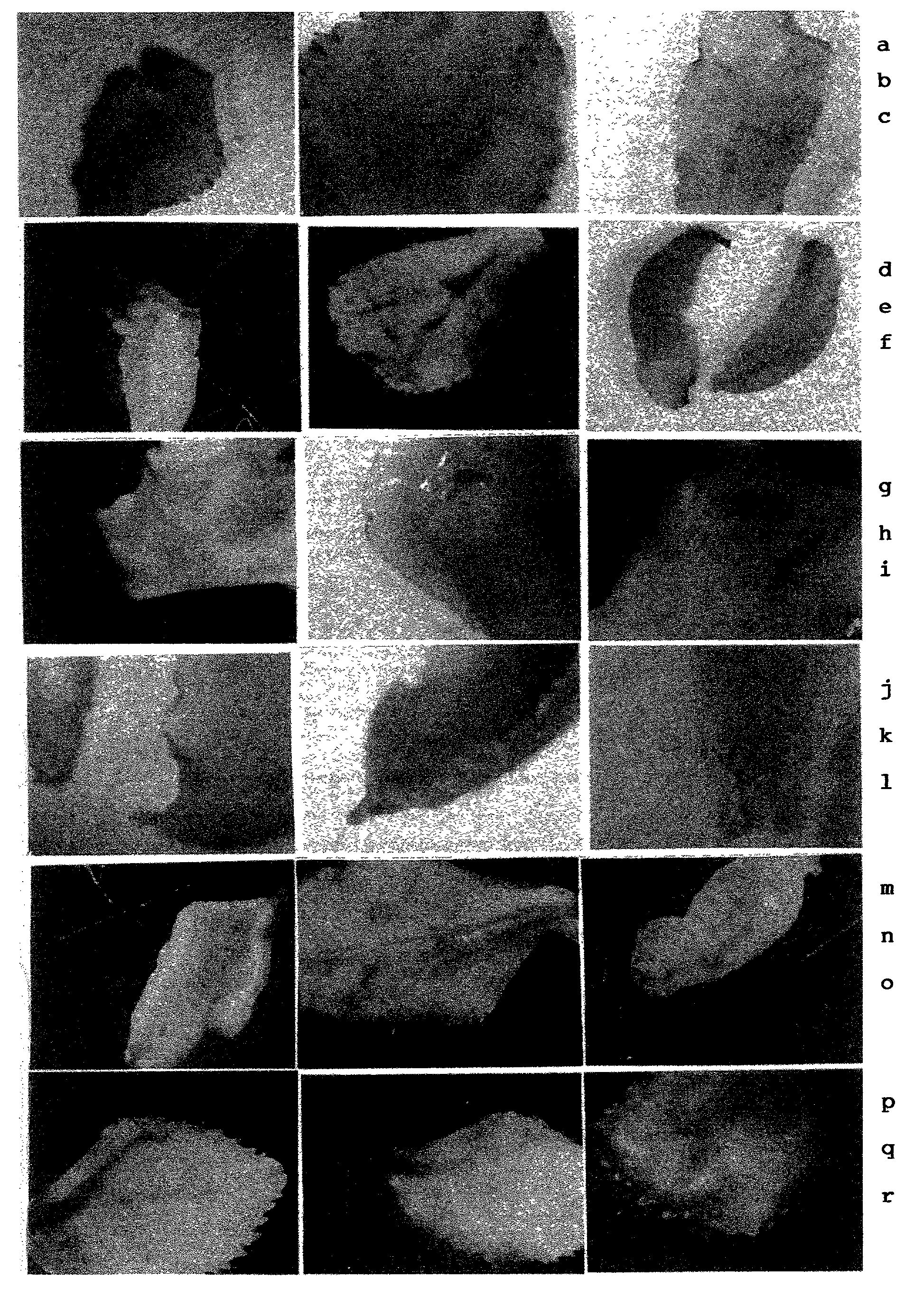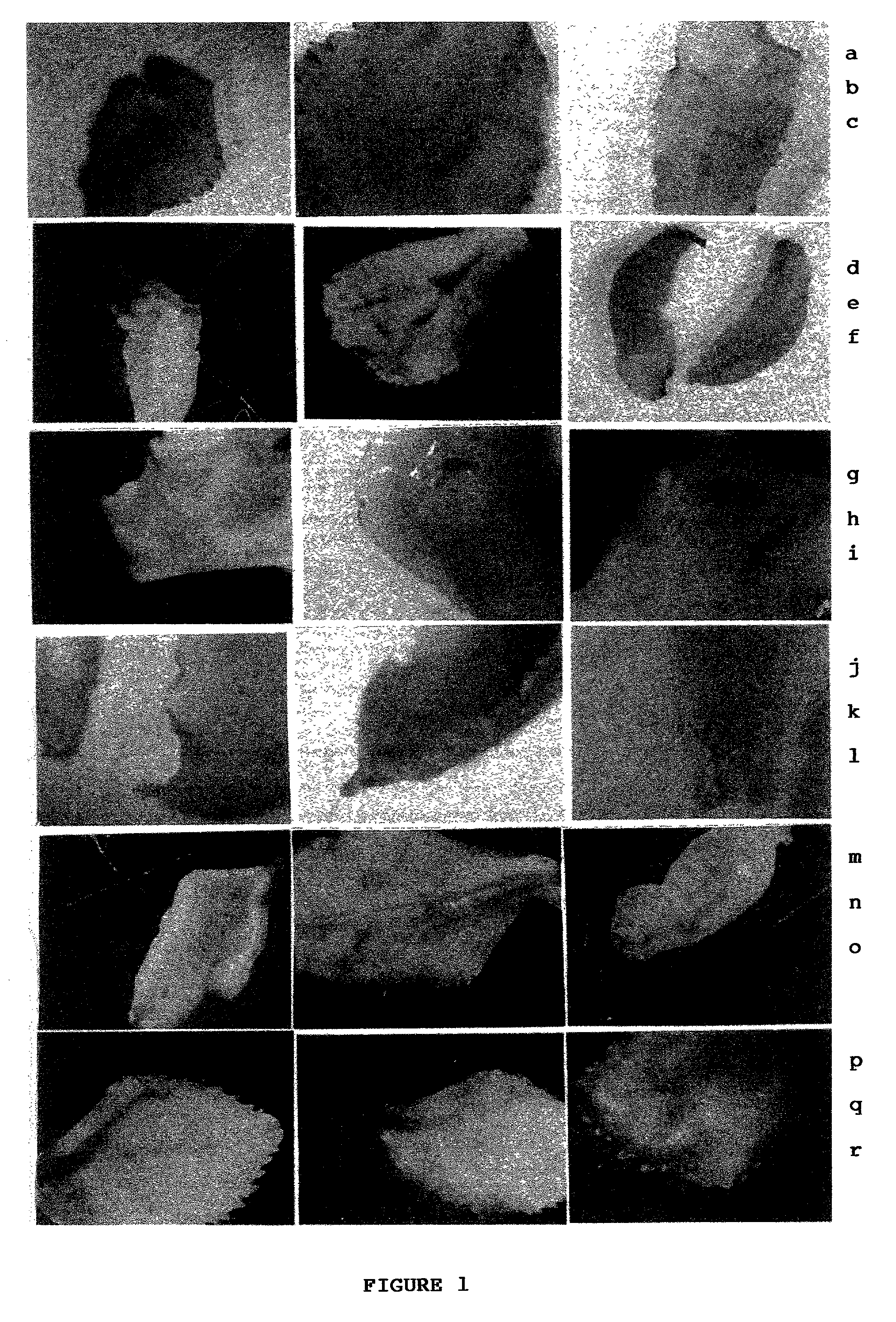Transgenic tea through biolistic using leaf explants
a technology of biolistic tea and transgenic tea, which is applied in the field of transgenic tea through biolistic using leaf explants, can solve the problems of insufficient tea production to meet the demands of domestic and world markets, genetic variability, and prone to blister blight disease, and achieves low transient gene expression and tissue damage. , the effect of increasing the damag
- Summary
- Abstract
- Description
- Claims
- Application Information
AI Technical Summary
Benefits of technology
Problems solved by technology
Method used
Image
Examples
example-2
[0092] Leaf explants of ex vitro raised plants were treated with different concentrations of osmotic agents and then transformed genetically through biolistics as stated above.
example-3
[0093] Leaf explants of plants of different cultivars (Chinary, Cambod and Assamica) were treated with different concentrations of osmotic agents and then transformed genetically through biolistics as stated above.
example-4
[0094] Different explants like somatic embryos, zygotic embryos and embryogenic calli were transformed genetically through biolistics as stated above.
[0095] The novelty of the method is that a checker board comprising of 354 combinations was developed which ensures the success of biolistic mediated transgenic production irrespective of the type of tissue, explant or genus.
[0096] Some of the novel features that were introduced are as follows:
[0097] 1. Basal hormone free MS (Murashige T. and Skoog F. A revised medium for rapid growth and bioassays with tobacco tissue cultures. Physiol. Plant. 15: 473-497; 1962) medium has been used for the first time instead of an osmoticum and this prevents the cumbersome and costly pretreatment steps with known osmotic agents.
[0098] 2. Concentric circles of variable diameter (2.0-9.0 cm) were drawn on a transparent polythene sheet wherein the diameter of the outermost circle was same as that of a 9.0 cm petridish so that the exact area where the tar...
PUM
| Property | Measurement | Unit |
|---|---|---|
| diameter | aaaaa | aaaaa |
| distance | aaaaa | aaaaa |
| distance | aaaaa | aaaaa |
Abstract
Description
Claims
Application Information
 Login to View More
Login to View More - R&D
- Intellectual Property
- Life Sciences
- Materials
- Tech Scout
- Unparalleled Data Quality
- Higher Quality Content
- 60% Fewer Hallucinations
Browse by: Latest US Patents, China's latest patents, Technical Efficacy Thesaurus, Application Domain, Technology Topic, Popular Technical Reports.
© 2025 PatSnap. All rights reserved.Legal|Privacy policy|Modern Slavery Act Transparency Statement|Sitemap|About US| Contact US: help@patsnap.com


